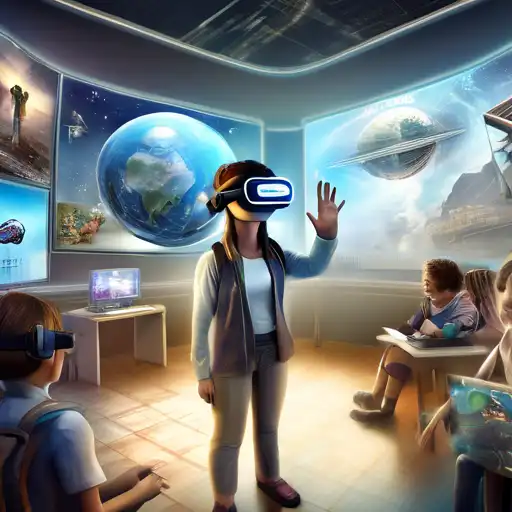Introduction to Virtual Reality in Education
Virtual Reality (VR) is rapidly transforming the educational landscape, offering immersive learning experiences that were once unimaginable. This technology enables students to explore historical sites, dissect virtual frogs, or even travel through space, all from the safety of their classroom. The potential of VR in education is boundless, providing a dynamic and interactive way to engage students.
The Benefits of Virtual Reality in Learning
VR in education offers numerous benefits, including enhanced engagement, improved retention rates, and the ability to simulate real-world scenarios. Students can practice surgeries, language skills, or mechanical repairs in a risk-free environment. This hands-on approach not only makes learning more enjoyable but also more effective.
Enhanced Engagement and Motivation
By immersing students in a 3D environment, VR captures their attention in ways traditional methods cannot. This heightened engagement leads to increased motivation and a deeper understanding of the subject matter.
Improved Retention Rates
Studies have shown that immersive learning experiences can significantly improve memory retention. VR's interactive nature ensures that learners are not just passive recipients of information but active participants in their education.
Challenges and Considerations
Despite its advantages, integrating VR into education comes with challenges. The cost of VR equipment and the need for technical support can be prohibitive for some institutions. Additionally, there is a learning curve associated with using this technology effectively in the classroom.
Overcoming Barriers to Adoption
To address these challenges, schools and universities are exploring cost-effective solutions, such as mobile VR and shared equipment models. Professional development for educators is also crucial to ensure they can leverage VR to its full potential.
Future Prospects of VR in Education
The future of VR in education is bright, with advancements in technology making it more accessible and affordable. As VR content becomes more diverse and curriculum-aligned, its adoption in schools is expected to grow exponentially.
Preparing for a VR-Integrated Future
Educators and institutions must stay informed about the latest VR developments and consider how to integrate this technology into their teaching strategies. Collaboration with tech companies and other educational institutions can also facilitate the sharing of resources and best practices.
Virtual Reality is not just a tool for entertainment; it's a powerful educational resource that can revolutionize how we teach and learn. By embracing VR, we can provide students with unparalleled learning experiences that prepare them for the future.
For more insights into innovative educational technologies, explore our EdTech Trends section.
